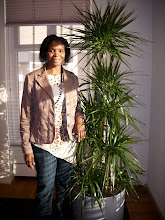
Educational technology has much to present to discourse in terms of technology integration at numerous levels; theorical, pedagogical and methodogical.A theoretical framework for educational technology structure by Shulman( 1986 ) in the formulation of Technological, Pedagogical Approaches, Content and Knowledge(TPACK)has a lot to offer in the flexible learning environment(as from the above diagram). This approach promotes the integrating of technology into pedagogy thus the combination of TPk,TCP and CPK leading to Technological,Pedagogical Approaches and Content Knowledge.It also attempts to confine some of the essential qualities of teacher knowledge required for technology integration in teaching, while addressing the composite, to be found in the nature of knowledge.Intergration of technology require understanding and negotiating the relation between all the the component.A teaher should understand the process of how to intergrate TPK,TCP and CPKT in teaching/learning.This process or relationship can reveal which teaching method is most appropiate for the content and how content can be restructed for better tranfer of information.consequently, widening participation of learners and at the same time enhance learning through flexible of provision. I believe, that the concept is in line with the promotion of flexible blended learning that suppots approaches to student learner centredness.
A combination of the approach (TPACK) can enhance teaching/learning depending on how a particicular topic might be presented. Carefully, application of the concept can promote flexible learning hence responding to some of the problems of teaching and learning. Some technologies are neither impartial nor balanced.Nevertheless, particular technologies may have their own propensities, potentials, affordances, and constraints that make them more suitable for certain tasks than others. For example, the use of email to communicate can be affordable that is asynchronous communication and easy storage of exchanges. Email does not afford synchronous communication in the way that a phone call, a face-to-face conversation, or instant messaging does. Nor does email afford the conveyance of subtleties of tone, intent, or mood possible with face-to-face communication.Another example is Enquiry learning. A teacher who knows how to integrate (TPACK) could help learners through the provision of networking learning, conferences, web search, e.learning,on line learning and other mode for better transfer of information.Well,in conclusion- Lock`s.(1967)suggests that, to teach “all that is knowable” should not be the only aim of education but that it should also aim to infuse students with “a love and esteem of knowledge” that provides them with the means and the mental attitude to inspire them with the dynamic of what we today would – a little clumsily – call life-long learning.

Hi Mutinta,
ReplyDeleteyou are writing about essential qualities of teacher knowledge requiered for technology integration. Which qualities are you thinking about?
In the second paragraph it is nice that you explain different appliances for a particular technology aspect. But I miss the reveal of the core of TPACK. (Or maybe I did not get it).
Hi Arrisal,
ReplyDeleteThanks for that question.A teacher is required to have the pedagogical content knowledge that can help in the facilitaton of TPACK as a frame work for technology.This means that a teacher, in this case could reveal the most appropiate technology for teaching content that can enhance better tranfer of information.For the second question,i have tryed to briefly elaborate how TRACK can be enhanced, ok dear.